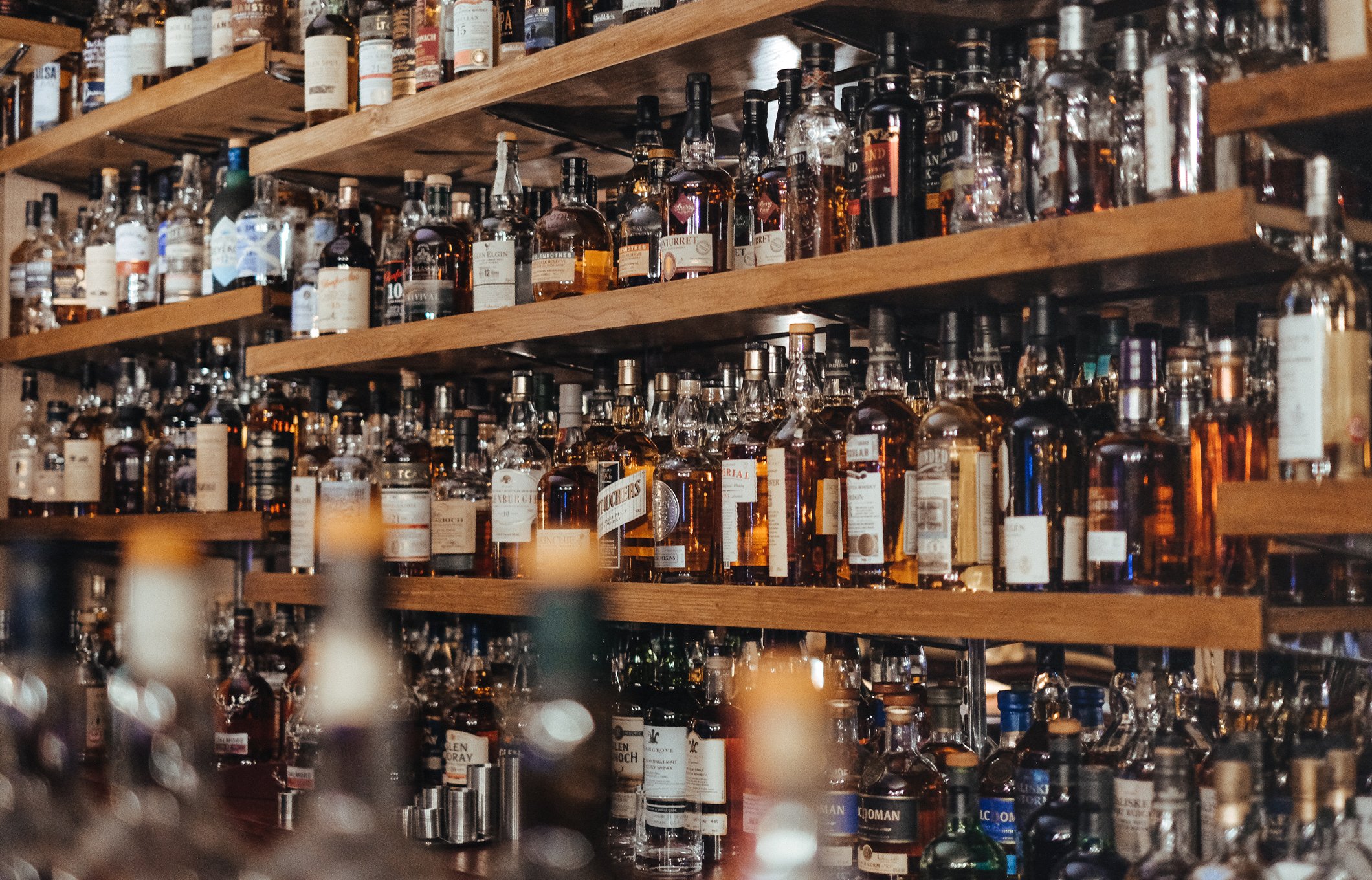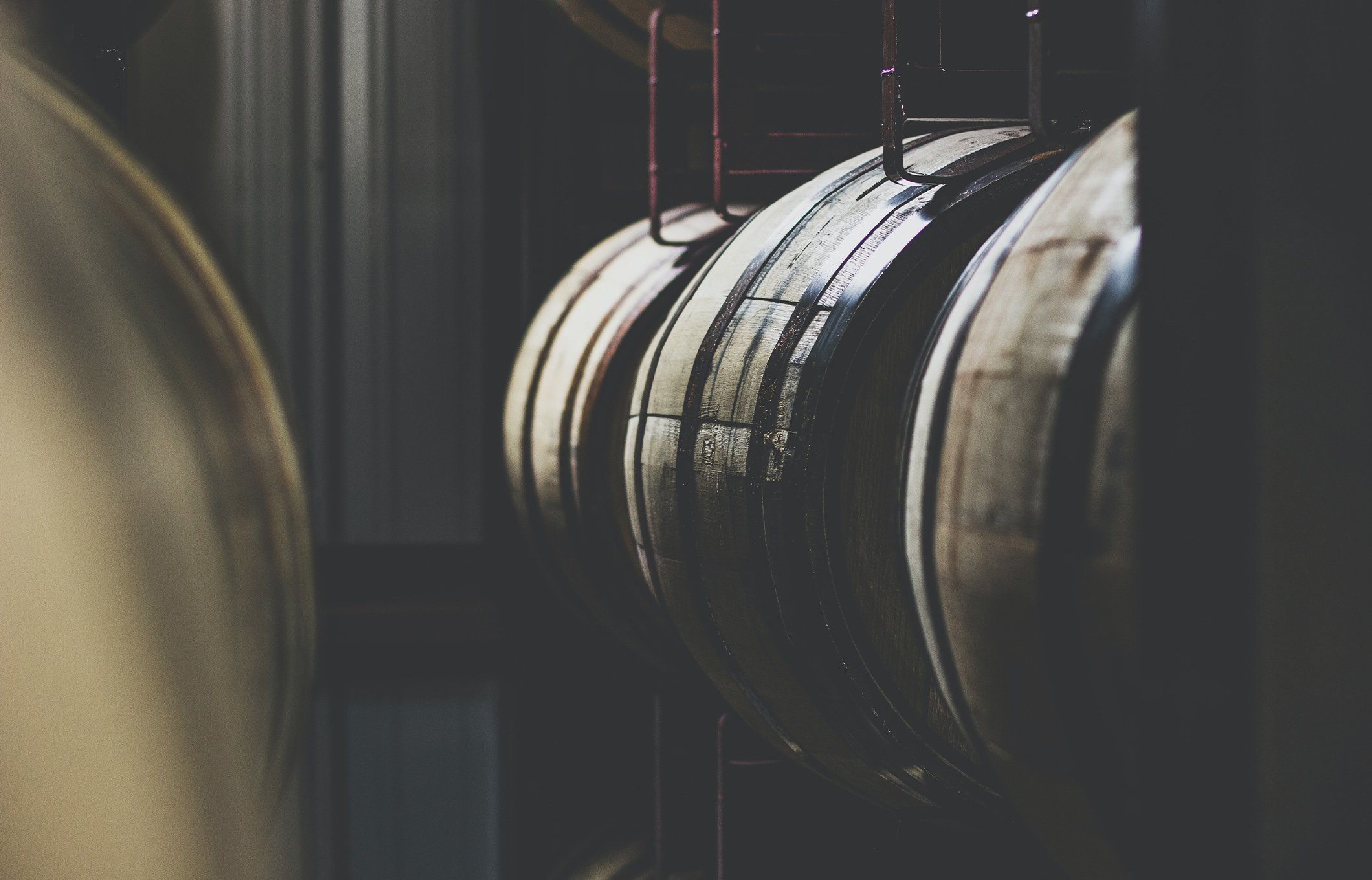
Your Guide To Understanding American Whiskey
World of Whiskey
Types of American Whiskey

In centuries past, there were two basic types of American Whiskey: rye and bourbon. In recent years, not only have subcategories of those two whiskeys been more clearly defined, so have new types of American whiskey altogether, making for a dynamic, beguiling sipping scene:
Rye
Rye grain flourished in the American Northeast of the 18th and 19th centuries, with Scots-Irish immigrants using it to create a new type of whiskey using the techniques they’d brought with them across the Atlantic. As the original American whiskey, rye dominated the market in the country’s early decades.
American Rye Whiskey must be made with a mashbill of at least 51 percent rye grain, with corn and barley typically filling out the recipe. Rye grain gives whiskey a spicy, often fruity profile that hits the taste buds more directly than the subtler notes in bourbon.
→ Subcategories of rye include high proof, Kentucky-style, and Maryland-style.
Bourbon
No one knows exactly when or where the first bourbon emerged from its charred-oak barrels, but by the 19th century it succeeded alongside rye whiskey, as farmers pushed westward into the new country and corn became a major crop. Only after Prohibition wiped out most rye production entirely did bourbon become known as the quintessential American spirit.
To qualify as a bourbon, a whiskey’s mashbill must be comprised of at least 51 percent corn, with the remaining percentage typically made up of rye, barley, and/or wheat. Thanks to the predominance of corn, bourbon tends to be sweeter than other whiskeys, with vanilla, oak, and nutty notes.
→ Subcategories of bourbon include high proof, wheated, and high rye. (Tennessee whiskey is technically a bourbon, as well.)
New Categories
As the whiskey renaissance of the 21st century gained steam, new categories of American whiskey have emerged, including American single malt and four-grain whiskey. The article below gives an overview of today's categories of American Whiskey, plus experts' picks for the best of each...
→ For Your Home Bar: The Best American Whiskeys in Every Category

Where American Whiskey Is Made

Early whiskey production in this country centered in Pennsylvania, Maryland, and New York, where rye grain was abundant, and where large numbers of Scots-Irish immigrants settled, bringing their whiskey expertise with them.
Kentucky later became nearly synonymous with bourbon, and still today 95 percent of the world’s bourbon comes from the Bluegrass State. But legally, bourbon can be made anywhere in the United States, as long as it’s produced according to the parameters we mentioned above.
As whiskey’s popularity continues to surge in the 21st century, several regions of the country are cultivating whiskey production for the first time (or for the first time in centuries), from the Pacific Northwest to Texas to New York. These regions are defining new kinds of whiskey, making full use of locally produced woods and grains, and sometimes even reviving forgotten techniques.
→ Whiskey Regions of the United States: Mapping the 21st Century

The Whiskey-Making Process

Several key steps are common to all whiskey-making.
Here's a breakdown of the general production process
Mashing
In this first step toward crafting a whiskey, grains such as corn, rye, barley, or wheat (depending on the type of whiskey being made) are combined with water and heated to convert the starches into fermentable sugars. The resulting mixture, known as mash, is then cooled.
Fermentation
The cooled mash is transferred to large round vats called fermenters, which are typically made of wood or stainless steel, then yeast is added to initiate the fermentation process. During fermentation, sugars in the mash turn into alcohol. The result is a liquid known as "distiller's beer" or "distiller's mash." This process can take several days to complete.
Distillation
The distiller’s beer next goes into a still where it’s heated, vaporizing the alcohol to separate it from the spent grains and impurities, then cooled to turn it back into a liquid. Most large-scale whiskey distillation uses column stills, which allow for continuous distillation, although some whiskey producers use pot stills only, or both column and pot stills. Most bourbons and ryes are distilled twice: after the first round, a whiskey will be about 50-60 percent alcohol, while the second will bring it up to as high as 70 percent alcohol.
Aging
After distillation, the whiskey is placed in wood barrels for aging (bourbon and rye must specifically be aged in new charred oak barrels). The aging process can last anywhere from two years to several decades, during which the whiskey develops its character, flavor, and color. Much of a whiskey’s ultimate flavor profile comes from its interaction with the wood of the barrel, extracting flavor and color from the charred oak.
Blending & Proofing
When whiskey has reached maturity, it comes out of the barrels to be blended and proofed into its final version. Unless they are single-barrel whiskeys, American whiskeys are a blend of many barrels. Most often, the barrels used to create a whiskey have the same mashbill and were distilled together. A finished blend is then proofed, or diluted in order to achieve the alcohol concentration that best showcases its character and flavor.
Pinhook deviates from the standard process of blending and proofing with its vintage approach to whiskey. While most whiskeys are blended and proofed to achieve an identical flavor profile year in and year out, we strive to get the best, not the same, whiskey from every set of barrels. This means embracing the slight variations in the grains and the conditions in which the whiskey ages.
→ Pinhook’s Blending and Proofing: The Key To Our Vintage Approach

We are living through a heyday of American Whiskey. No longer associated solely with bourbon, it now occupies a delightfully eclectic spot within the global whiskey landscape, not quite as hemmed in by tradition as Scotch and Irish whiskies, not as particular as those from Japan.
The key point of differentiation historically came when European immigrants to the young United States embraced the grains that thrived here–especially rye and corn. Three centuries later, American Whiskey is famous around the globe for not only its bourbon, but its ryes, single malts, and more. To find out more about what distinguishes American whiskey, how it’s made, and where it thrives, read on…
